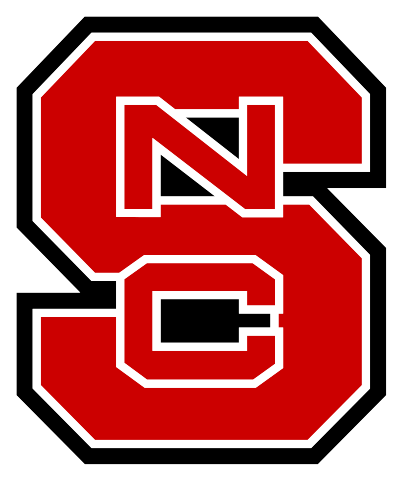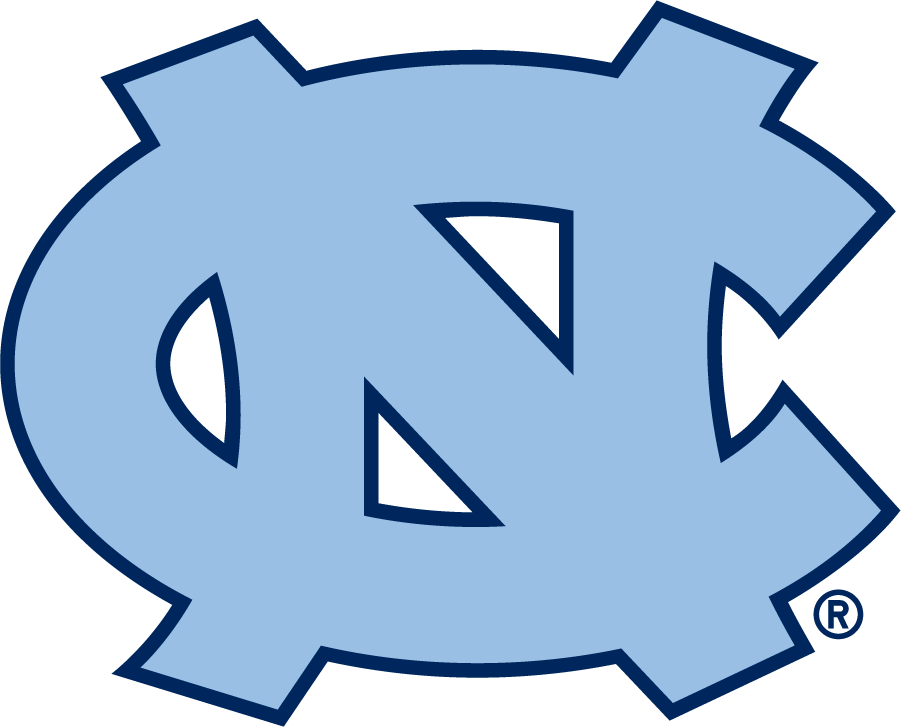College Crosscheck Week 10: NC State, North Carolina, Florida State & Wake Forest
April 25, 2024
 After some initial ACC action with Virginia and Louisville during Week Nine of College Crosscheck, Week Ten was a continued focus on the top prospects of the ACC. My travels took me to the Carolinas for one game of North Carolina at NC State, as well as a series down Tobacco Road for Florida State at Wake Forest.
After some initial ACC action with Virginia and Louisville during Week Nine of College Crosscheck, Week Ten was a continued focus on the top prospects of the ACC. My travels took me to the Carolinas for one game of North Carolina at NC State, as well as a series down Tobacco Road for Florida State at Wake Forest.
NC State
Jacob Cozart, C- Off to a hot start the first few weeks of the 2024 season, Cozart has seen his batting average fall from over .400 to currently below .300. His usually smooth, all-fields stroke looked to be more pull-centric than past evaluations. There’s still average raw power (109 mph max EV this season) from the 6-foot-3, 210-pound left handed hitter, but with a preference to controlling the zone (31 BB vs 28 SO) over power production (26 XBHs in 2023 vs 11 in 2024) he’s still searching for a better balance with the two. Showing plus arm strength that was downhill with plus accuracy to second base last summer at the USA CNT Trials, his arm is now closer to average with a small wrap in his throwing action that can hinder his POP time. However, he did shoot an encouraging 1.94 POP for a caught stealing during Friday’s second game. He also muffed a couple of catchable pitches during both Thursday and Friday’s contest, but over the long term, Cozart has shown me that he is a sound receiver. He’s one that can steal strikes and is especially adept at pulling the borderline low pitch into the zone. Once the top college catching prospect in the 2024 draft class, Cozart has now fallen into the second round, behind Malcolm Moore (Stanford), Caleb Lomavita (Cal) and Walker Janek (Sam Houston State).
Eli Serrano, OF- There’s a difference of opinion throughout the industry on where Serrano falls in this year’s college draft class. A draft-eligible sophomore, some scouts will stretch and project him to late on Day One, while other clubs who are more analytic-leaning will slot him into the fourth to fifth rounds. It’s a top-heavy draft and after the top echelon there are a lot of similar prospect profiles from the third-to-fifth rounds. Serrano should ultimately rise to the top of that group, settling somewhere close to the top 100 overall picks. Long and lanky at 6-foot-5, 200-pounds, the Wolfpack leadoff hitter has a smooth lefty stroke and length through the zone. It’s a strong approach that has led him to a high OBP, but below average game power production with just nine XBHs in 166 plate appearances that has resulted in an uninspiring .131 ISO. His season maximum exit velocity is 111 which is a tick above average and he is also an above average runner underway. In the big field he’s an average defender with an average arm, average accuracy and average range.
More Leaders of the Pack: Draft-eligible sophomore Dominic Fritton struggled mightily in the first half of the season, but has now put together two consecutive solid starts. After 5.2 innings of three-hit, shutout ball last week at Clemson, the lefthander followed it up with six strong against the Tar Heels. He has a unicorn fastball with a very low Vertical Approach Angle that enables it to play well above its 90-93 mph velocity. It’s so good that he’s able to throw it right down the middle for swing/miss. However, his early season ability to do just that was plagued by major control issues with 24 walks in his first 31 innings this spring. Fritton also showed a quality changeup, curveball and slider/cutter. Junior shortstop Brandon Butterworth came to play in the UNC series with a walk-off home run (102 mph EV) in the bottom of the ninth of game one and a clutch RBI single in game two. The Western Carolina transfer was already highly regarded for his stellar defense, and his weekend exploits on offense were just icing on the cake for the Wolfpack in their series W. In addition to Butterworth, NC State made another wise portal acquisition with grad student Garrett Pennington. The 6-foot, 225-pound first baseman has a chance to hear his name called late in this year’s draft based on his 2024 season performance to date. He’s a hit machine who consistently churns out quality at-bats. He stayed hot collecting five hits in nine at-bats during the first two games of the series and for the season has posted a .365/.443/.660 slash with 17 doubles and 10 home runs. Sophomore Derrick Smith has turned himself into a legitimate 2025 draft prospect. The 6-foot-2, 220-pound righthander showed a loose, quick arm from a high three-quarter slot with a lively fastball sitting in the 92-94 mph range while touching 95. His slider was even more nasty at 81-83 with very good deception and repeated swing/miss. It spun super tight in the 2800-3000 rpm range. He has struck out 25 in 17.1 innings so far this season. Another 2025 draft-eligible righthander who impressed was Shane Van Dam. The long-bodied (6-foot-6, 195-pounds) impressed with a 92-94 mph fastball straight from the electric factory with elite spin rates in the 2600-2700 rpm range. The transfer from Division III SUNY Cortland, where he was a football quarterback, also had a very good feel for a tight three-quarters slurve at 79-81. Opponents are batting just .202 against Van Dam this spring. His continued development will make a great story for the 2025 MLB Draft. And if those two young arms weren’t enough, how about the heat-seeking Jacob Dudan. Just a freshman, Dudan touched 98 once again this season during his outstanding relief appearance in game two. The freshman was electric in a 1-2-3 ninth, pumping 96-98 heat and freezing Vance Honeycutt on a 96 mph fireball on the black to end it.
North Carolina
Casey Cook, OF- After missing nearly all of the 2022 season with a shoulder injury, Cook put together a strong sophomore season in 2023 with a .317/.428/.415 line of production. His season also included three home runs and 11 doubles in the 59 games. Noticeably bigger and stronger this year, especially in his forearms, Cook still has his smooth swing, and he’s added more over the fence pop with 12 round-trippers to date. He’s the Tar Heels best pure hitter, is long through the zone and uses all fields. The 6-foot, 195-pound lefty hitter showed easy juice to left centerfield in batting practice before homering twice to his pull side in his first two at-bats of Thursday’s game. The first, he ambushed a 93 mph fastball for a line drive laser beam to right field. The second, he struck deep to right centerfield 420’ with an exit velocity of 105 mph. Cook’s ability to hit will be his carrying tool at the next level, and he does have defensive versatility with a near average arm and average run tool once underway. A left fielder on this UNC club, Cook hasn’t yet found a true defensive home, but he has played second base and first base in the past. Cook was also 4.3 down the line after smoking a low line drive off the pitcher’s foot that deflected to the third baseman. Cook is a top five round prospect for this year’s draft.
Vance Honeycutt, CF- Last week college baseball’s best defensive outfielder became the first player in Tar Heel history to hit 50 home runs and steal 50 bases for his career. He’s also the first in ACC history to hit 50 and steal 60. It’s a dynamic power/speed/defense skill set that is led by his future MLB Gold Glove type ability. Honeycutt covers gap to gap with ease using his 70-grade run speed, elite first step and instinctive routes. In the batter’s box he’s maintained around a .300 batting average all spring. It's an unorthodox swing that is engaged with a hand drop load and then unleashed forward into a grooved swing path. It’s this lack of flexibility that has led to a 28% strikeout rate this season on top of 20.4% last season and 29.7% as a freshman. However, when the right handed hitter does connect, his crazy natural strength allows him to big fly any part of the field. He miss-hits balls 400’. Despite an unmanageable strikeout rate that doesn’t project to hit for much average at the next level, Honeycutt’s package of tools and skills is too great to get past the top 25 picks. He will be selected towards the end of the first round even though history is against his chances of hitting enough for average to become an everyday Major Leaguer. A couple similar college outfield prospects in recent drafts would include Hunter Bishop (Arizona State) and Jud Fabian (Florida). Fabian was a plus defender (albeit not plus-plus like Honeycutt) with similar power and a college career 24% strikeout rate. He batted .176 with a 37.4% strikeout rate last season in Double-A as a 24 year-old.
GOODBYE BASEBALL, HELLO HISTORY BOOK! pic.twitter.com/a2bgAm8vvE
— Carolina Baseball (@DiamondHeels) April 16, 2024
Additional Talented Tar Heels: I also leave the Doak very impressed with Tar Heels’ right fielder Anthony D’Onofrio, a 24 year-old graduate transfer from Quinnipiac. Typically, grad transfers are more skilled than toolsy, however DOnofrio is skilled AND tooled. He’s a plus-plus runner with a plus arm and plus range. He’s actually a true center fielder who plays right field in deference to the best outfield defender in college baseball; Honeycutt. At the plate he ignited the Tar Heels offense from the leadoff spot with three hits on Thursday that included a double and a triple. DOnofrio is currently batting .308 with 19 XBHs and 16-for-16 on the base paths. A potential first round prospect for 2026, Jason DeCaro impressed in game one of the series. Long, loose and projectable at 6-foot-5, 220 pounds, the righthander sat 92-93, touching 95 with average life on his fastball. His changeup is already a pro-quality average and he also mixed in a usable 79-83 slider. Redshirt sophomore lefty Dalton Pence relieved DeCaro and popped a couple 95s, mostly sitting 93-94 in his brief relief appearance. Pence is excelling in his new role as high leverage reliever with a 1.65 ERA and 40 strikeouts in 32.2 innings. Sophomore righthander Cameron Padgett has made a big jump in his velocity since last spring, now sitting 94-96 to go along with an above average changeup that showed late action with good bottom. He’s one to watch move up prospect follow lists for the 2025 draft. Strong-armed senior reliever Matt Poston took the loss in the series opener, but he pumped 93-95 heaters to go along with an 87 mph slider.
Florida State
Carson Dorsey, LHP- This season the versatile southpaw has been used to start games, close games and everything in between. Against Wake, Dorsey got the start in the series' second game and attacked the zone with primarily a 92-94 mph fastball that touched 95 and a low-80s slider. He has a funky look with a deep arm path that straightens back into a high release point. There’s effort and deception in his over-the-top delivery and he’s an especially tough matchup against same-sided batters. His fastball spins very efficiently (96-98%) in the mid-2400 rpm range which enables it to ride with an IVB of 18-21” and go above bats for swing/miss. His 81-84 mph slider spun with similar rpm and also generated swing/miss down in the zone. Dorsey also mixed an occasional 74-78 mph curve and subtracted spin (1590-1715 rpm) low-80s changeup. Overall, the 6-foot-2 lefty was strong throughout his six inning start, accumulating 11 strikeouts against just one walk over 98 pitches. There is no such thing as a guaranteed big leaguer from the draft, but college left handers who have good control and strong strikeout rates tend to have a high rate of success. For me, Dorsey is a good bet to become a big leaguer in some capacity. If I were still an area scout he would slot in the 4th to 6th round on my draft pref list.
Cam Smith, 3B- The crown jewel in Florida State’s 2022 recruiting class, Smith finished with 66 strikeouts (28.7% K rate) against 21 walks in 230 plate appearances as a freshman last spring. The 2024 draft-eligible sophomore made a remarkable adjustment in the Cape last summer, earning All-Star honors and finishing with a .341 average with six home runs and 14 doubles. That excellence and his adjustments have continued this spring with a current batting average of .405 and 22 XBHs in 188 plate appearances. His top exit velocity this season is 115 which is 65-grade on the pro scale. His strikeout rate has also plummeted to a current pace of 17.6% which is much more in-line with top round prospect traits. His setup on every pitch resembles a two-strike approach with a spread stance and no load. The 6-foot-3, 220-pound right handed hitter uses his lower half really well. He is also more than strong enough with plus bat speed to make the dead start work at the college level, but I have some concerns about how this transfers to the pro game with wood bats and consistently higher velocity on the inner third of the plate. He will most likely need to make another refinement to his approach/swing. Defensively, he shows fair hands and less than average range at the hot corner. There’s extra length in his field/throw transfer and he will need reps for polish to stay at the hot corner on an everyday basis at the next level. Overall, Smith has the tools and talent to likely be considered starting in the second round.
James Tibbs, OF- Steadily progressing on both sides of the ball each season in Tallahassee, the 6-foot, 205-pound left handed hitter stands out for his selective aggressive approach at the plate and the resulting consistent hard contact. His max exit velocity this season is 114 mph which grades as plus on the pro scale. Tibbs separates himself from all others, not named Cameron Sisneros, Travis Bazzana or Jac Caglianone with his ability to get to that power (16 home runs, 14 doubles), as well as his elite control of the zone. He has struck out just 14 times this season against 29 walks in 185 plate appearances. His strikeout rate is just 7.6% and when combined with a .430 ISO it’s a combination that no other college hitter besides Caglianone can match. Tibbs’ ability to produce power while controlling the zone reminds me of Michael Conforto who was selected 10th overall in the 2014 draft. Tibbs is also an improving defender in right field with plus to better arm strength and will likely be considered for selection starting in the middle of the first round.
Future Draft Noles: One of the top arms for the college draft class of 2025 made the start for the Noles on Friday. Jamie Arnold has Josh Hader characteristics with a low arm slot and electric fastball. The competitive lefty touched 96 with his heater and mixed a nasty 86-87 mph sweeper of a breaking ball. What separates Arnold from others with this type of stuff is Arnold’s advanced ability to pitch. Look for him to begin high on industry draft follow lists this fall. Another talented Seminole sophomore, Max Williams led off game one with an opposite field blast against Wake ace Chase Burns. It was a 420’ bullet with a 104 mph exit velocity against a 99 mph heater from Burns. The left handed hitting Alabama transfer is uber-aggressive from the leadoff spot with just seven walks in 133 plate appearances, but is slugging .559.
Wake Forest
Chase Burns powered 93 pitches over five innings which was his shortest start of the season. His 96-100 mph heater had less ride than usual, as he didn’t look to be staying behind the baseball for max efficiency or vertical break. His heater’s spin efficiency hovered in the 68-70% range and IVB was less than normal as a result. However, he once again dazzled with a three-pitch secondary mix consisting of curveball, slider, and changeup. All pitches are above average with the upper-80s slider being elite. The pitch has a 60.3% Whiff rate (total swing & miss / total swings) this season which ranks in the 100th percentile of college baseball. Burns is a no-doubt top of the first round talent. First Baseman Nick Kurtz showed off his super easy 80-grade raw power in batting practice on Friday, flicking balls over the fence with minimal effort.
Kurtz also stepped up in big spots throughout the weekend and helped lead the Demon Deacs to a series W over the Seminoles. He’s a sure-fire top half of the first round selection. Super utility player Seaver King also stepped up throughout the series. In addition to his clutch hits and majestic home run (461’ moonshot launched at 114 mph) I loved the fire in his belly and the passion with which he plays. Defending at both third base and center field this series, he showed athletic, but unpolished actions at the hot corner and 50/55 arm strength with inconsistent accuracy across the diamond. He typically runs near a 4.0 home to first from the right side and I clocked a 4.27 on a turn for a hustle double on a bloop liner to right field. His current plus to slightly better raw power projects to further strengthen as he fills out his wiry, athletic frame. For many reasons, King has begun to receive comparisons to Mookie Betts. If other toolsy talents like Vance Honeycutt and Dakota Jordan are too risky due to their strikeout rates, King is an excellent alternative in the same area of this year’s draft.
RELATED CONTENT
- PBRPlus College Crosscheck: Week 13- Iowa, Kansas State, West Virginia 5/16/24
- PBRPlus 2024 MLB Draft: Cross Checking the Top College Catchers 5/14/24
- PBRPlus College Crosscheck: Week 12- Illinois State, Indiana State, Miami (FL), Portland, Southern Illinois 5/10/24
- PBRPlus College Crosscheck Week 11: Clemson, Louisville, Evansville and Missouri State 5/02/24
- PBRPlus College Crosscheck Week 10: NC State, North Carolina, Florida State & Wake Forest 4/25/24
